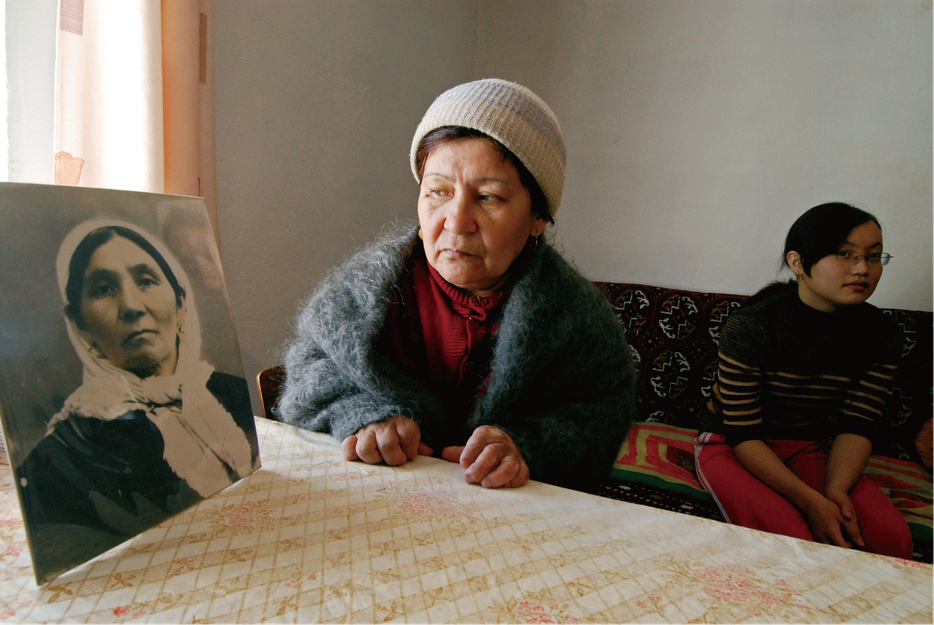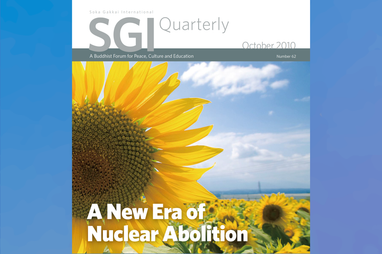SGI Quarterly

Tilman Ruff is a public health physician specializing in infectious diseases, with a particular commitment to the public health imperative to abolish nuclear weapons. He is the Chair of the International Campaign to Abolish Nuclear Weapons (ICAN) Australia.
What happens to people, other living things and land, water and air when a nuclear weapon explodes? Nuclear weapons literally bring the same magnitude of power that drives the stars into the midst of our fragile interdependent world. It is a power which in scale, persistence and nature of the damage inflicted is without parallel. Apart from a collision with a large celestial body, there is nothing but nuclear weapons that, at any moment, could end human civilization and life on our Earth in the space of a few hours.
Nuclear Weapons and Health
The World Health Organization has determined that no health service anywhere in the world would be capable of dealing with those injured by blast, burns and radiation from a single nuclear explosion over a city. The largest nuclear weapons currently deployed each contain as much explosive power as all the bombs used during World War II put together. Nuclear weapons have been built and tested that contained several times more explosive power than the sum of all weapons used in all wars fought throughout human history.
One unique aspect of nuclear technology including weapons is ionizing radiation, an unseen poison produced by many different isotopes. Some important isotopes persist only for hours, days or weeks; others for decades or centuries; yet others for billions of years—time frames which render any current human institution irrelevant. Some are concentrated in plants and animals and mimic normal elements in different parts of our bodies; some in fetal tissues. Young children and females are most sensitive to harm from radiation. The most injurious feature of radiation is its bundling of energy in a form which is particularly damaging to our genetic blueprint—our DNA. These long molecular chains quite literally make us, and are our most precious inheritance and legacy to the next generation. An acutely lethal dose of radiation may contain no more energy than the heat in a cup of coffee. Damage to our genetic blueprint can injure and kill cells, be passed to the next generation, or give rise to cancer, even decades later.

A radiation victim in Sarzhal, Kazakhstan, near the Semipalatinsk test site, remembers her mother, who died of cancer caused by radiation; almost all the 2,400 inhabitants suffer from the effects of nuclear testing. [Photo credit: © John Van Hasselt/Corbis]
New data continue to emerge which demonstrate that there is much about radiation health effects that is poorly understood; and that these effects have consistently been underestimated. Cancer rates among the survivors of the Hiroshima and Nagasaki nuclear bombings are still rising. A recent study of New Zealand veterans 50 years after they participated in 1950s British nuclear tests in the Pacific identified an almost threefold increase in the rate of abnormal chromosomal rearrangements compared with service personnel who had not participated in nuclear tests. Research on veterans of British nuclear tests in Australia found rates of cancer far higher than expected on the basis of their estimated radiation doses. A major recent study of cancer in German children between 1980 and 2003 conclusively demonstrated a more than doubling of the rate of leukemia in children living within 5 km of a nuclear power reactor, with increased risk extending beyond 50 km—again, way beyond rates expected on the basis of conventional understanding of the exposures involved.
Nuclear Winter
In the 1980s, international teams of scientists discovered that even 100 of the then 70,000 nuclear weapons, if targeted at cities and industrial sites, would ignite vast fires, generating huge amounts of sooty dark smoke. This smoke would envelop the whole planet and cause a "nuclear winter," absorbing so much of the incoming sunlight that the Earth's surface would quickly become dark, cold and dry. Recent studies by some of the world's foremost atmospheric scientists have confirmed not only that these effects would be more severe and prolonged than previously thought, but that abrupt global cooling, unprecedented in recorded human history, would follow a regional nuclear war involving 100 Hiroshima-size nuclear weapons. The millions of tons of smoke from such a war would spread around the whole world within a few weeks, and heated and lofted by the sun, persist in the upper atmosphere beyond the reach of rain and weather, blocking sunlight for at least 10 years.
Vulnerability to nuclear catastrophe unites us all wherever we live.
Reduced sunlight; cooling, with shorter growing seasons, summer cold spells and frosts; reduced rainfall, by as much as 40 percent in the Asian monsoon regions; more ultraviolet radiation because of depletion of protective ozone in the upper atmosphere; and disruption of supplies of fuel, fertilizer and seed would combine to reduce or eliminate agricultural production around the world over several successive years. Global grain stocks would feed the world's population for only about two months, and trade in food would cease. It could conservatively be expected that the more than one billion people who are chronically malnourished today, and the several hundred million more highly dependent on grain imports, would not survive long. Even the warheads on one nuclear-armed submarine could produce, in addition to tens of millions of immediate casualties, a global environmental disaster.
These findings have clear policy implications. Vulnerability to nuclear catastrophe unites us all wherever we live. Any use of nuclear weapons risks escalation in unpredictable and uncontrollable ways. Any use of nuclear weapons would not only be an unconscionable crime, but suicidal. Abolishing nuclear weapons is the only practical, sustainable solution—urgently, before they are ever again used.


